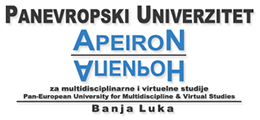 Optimization of Oil Extraction Process from White Mustard Seeds Using Response Surface Methodology
Optimization of Oil Extraction Process from White Mustard Seeds Using Response Surface Methodology
Optimization of Oil Extraction Process from White Mustard Seeds Using Response Surface Methodology
Martin Stojchevski, Angelina Slaveski, Stefan Kuvendziev, Katerina Atkovska, Irena Mickova, Mirko Marinkovski, Kiril Lisichkov
Faculty of Technology and Metallurgy, “Ss. Cyril and Methodius” University in Skopje, N. Macedonia
martin@tmf.ukim.edu.mk
ABSTRACT: In this study, response surface methodology (RSM) was used for the determination of the effect of two
process parameters (extraction temperature and extraction time) and their interaction on the yield of the total extract
from white mustard seeds (Sinapis alba l.), as well as the creation of a mathematical model, 3D response surface,
and the establishment of an optimal extraction region. Ethanol 96% as a green solvent was employed to separate
biological compounds from white mustard (Sinapis alba l.) seeds by applying ultrasound-assisted extraction (UAE).
UAE was performed at the temperature of 25, 30, and 35℃ for a duration of 30, 60, and 90 min. UAE as a modern
extraction technique showed great performance, while the ethanol solvent provided a high yield of compounds. The
utilized RSM design adequately fit the experimental data with a high coefficient of determination (R2=0.9365)
and low mean absolute error (MAE=1.12242). Estimated effects for the yield of the total extract showed that the
extraction time, the temperature, and the interaction between time and temperature influenced positively, while the
time-squared and the temperature-squared influenced negativity on the yield of the total extract. Analysis of variance
showed that 2 effects have P-values less than 0.05. The optimal yield of the total extracted oil was 15.19% at the temperature of 35℃ for a duration of 70.3 min.
Keywords: white mustard seeds, extraction, RSM optimization, influence of process parameters, 3D response surface.
| Attachment | Size |
|---|---|
| Pages from QOL-Volumen 15_Issue 1-2 FEBRUAR 2024-WEB.pdf | 516.46 KB |
